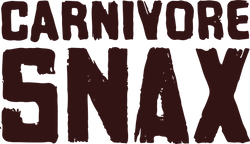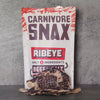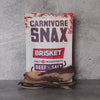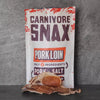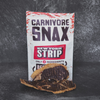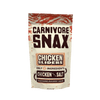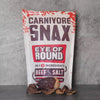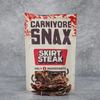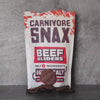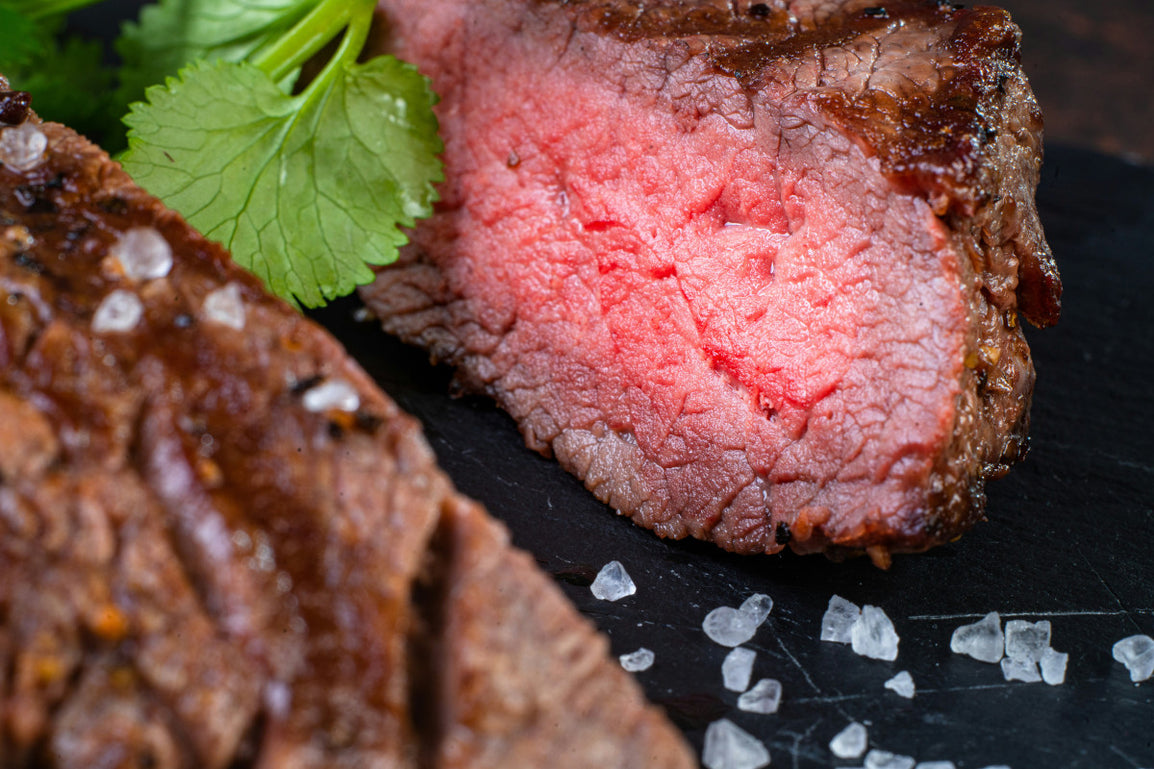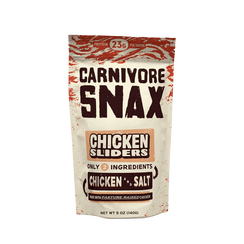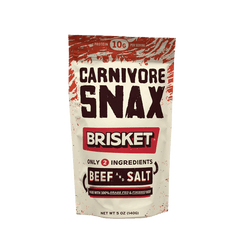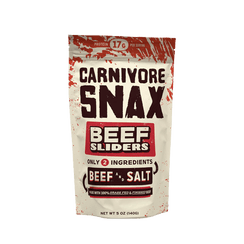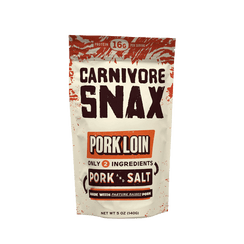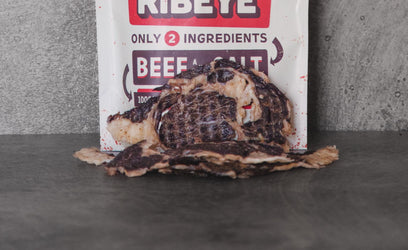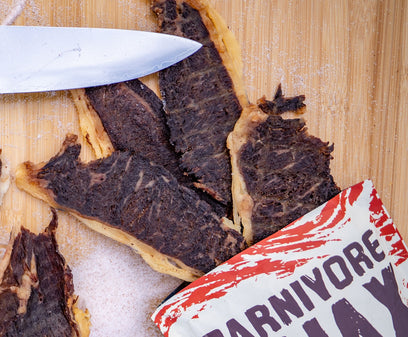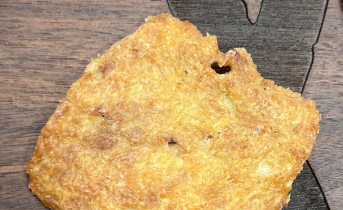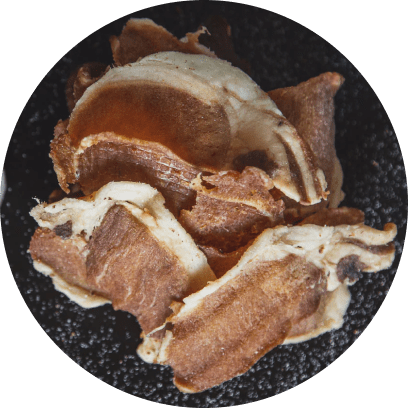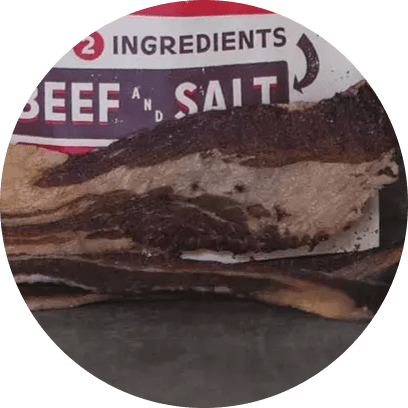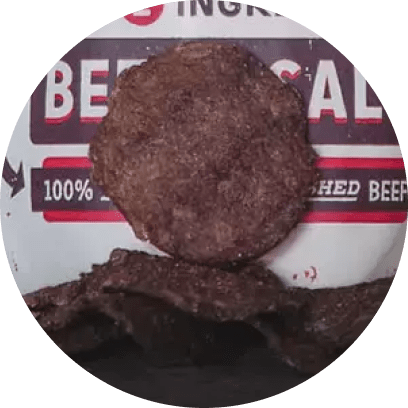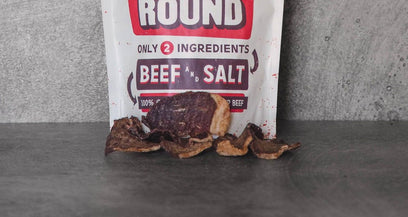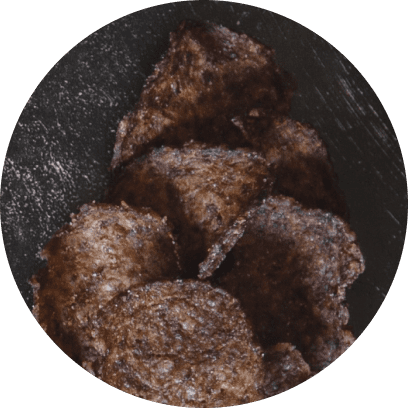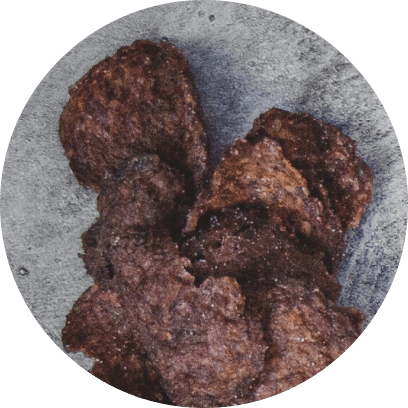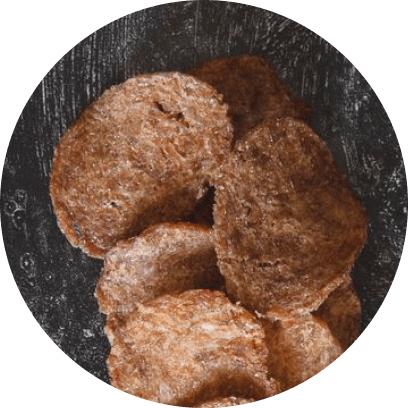THE CARNIVORE DIET BENEFITS




Whether you’re an athlete trying to bulk up for the upcoming season or you just want to pack some muscle on for the sake of aesthetics and self-confidence, your diet is undoubtedly the most important lever you can pull.
Sure, you need an effective strength training regimen - but what and how you eat is what actually stimulates muscle growth.
You may be wondering, can you build muscle on carnivore diet? After all, the carnivore diet plan for muscle gain focuses on high-protein intake along with healthy fats, potentially increasing testosterone and setting the stage for effortless gains.
We believe this is the best approach to building muscle, as a matter of fact. Learn more below in this guide to carnivore diet muscle gain, including why it works and how to start the carnivore diet.
Set yourself up for success today by stocking up on the best snacks for carnivore diet. Whether you need a pre/post-workout boost of protein or a way of managing cravings during the day, our meat chips are the #1 choice!
Overview of the Carnivore Diet
Before we look at the link between carnivore diet and muscle gain, let’s take a step back. What is the carnivore diet in the first place? You probably know it involves eating animal products, but what can you eat on the carnivore diet and what has to be avoided?
This nutritional approach eliminates all plant-based foods from the menu. That means no fruits, vegetables, grains, nuts, seeds, or anything in between. Instead, you’ll eat just meat - steak, chicken, pork, fish, organ meats, etc.
Certain dairy products are allowed as well, such as milk and cheese on carnivore diet. Can you eat eggs on carnivore diet, though? Yep! Basically, anything that comes exclusively from an animal is fair game.
Now, is the carnivore diet healthy? What are the potential benefits of carnivore diet? The idea is that this is a much closer regimen to what our ancestors would have eaten.
In this sense, you could avoid many of the health complications associated with the modern diet - obesity, inflammation, digestive issues, metabolic disorders, and more. Plus, it’s a very simple and straightforward diet since you’re not tracking calories or stressing about eating windows.
Many followers claim that the diet helps stabilize mood, reduce symptoms of anxiety and depression, and enhance cognitive function as well. This could be due to the increased intake of omega-3 fatty acids and other brain-healthy nutrients.
The diet is extremely low in carbohydrates, with an emphasis on high-quality proteins and fats derived from animal sources. This means your body will be forced to burn fat for fuel, which leads to impressive carnivore diet weight loss.
But, maybe you don’t really care about losing weight. You want to bulk up. So, can you build muscle on carnivore diet, too?
Can You Build Muscle on Carnivore Diet?
Building muscle on the carnivore diet is not only possible - it’s actually one of the best dietary approaches for this specific goal! We’ll explain why below.
High Protein Intake: The Cornerstone of Muscle Building
A high protein carnivore diet sets you up for effective recovery outside of the gym, which is actually where muscles are built. Contrary to what many assume, it’s actually not in the weight room but in the kitchen where you gain muscle!
Your training simply breaks down your muscles in a manner that encourages them to grow back stronger. You still need to feed them the necessary inputs to recover better than before, and protein is what provides the amino acids necessary for muscle repair and growth.
You’re not just getting any protein, though - you’re getting the most high-quality, bioavailable protein source possible. Animal proteins, such as those found in beef, chicken, pork, and fish are efficiently absorbed and utilized by the body. They’re far superior to plant-based sources.
The Role of Dietary Fats in Muscle Gain
Everyone thinks about protein when it comes to muscle growth, and for good reason. But fat plays a part in the process of strength and muscle gains, too! This is where the conversation of carnivore diet testosterone comes into play.
Dietary fats are essential for the production of hormones like testosterone, which is a key driver of muscle growth. Consuming enough fat ensures your body can produce and regulate these hormones effectively for muscle hypertrophy.
But there are also energy considerations here. Since you’re not eating any carbohydrates on carnivore diet, fat is your body’s fuel source. This is especially important for helping you push the limits in the gym and set the stage for effective muscle growth through diet.
Just be aware, though, that there’s a fine line between eating fat for muscle growth and consuming too many calories. Don’t worry, we’ll help you perfect your macros for carnivore diet in just a bit. Let’s look at some potential side effects of the carnivore diet plan for muscle gain.
Potential Side Effects
There’s no question that building muscle on the carnivore diet is an effective approach. But, you should be aware of the side effects of carnivore diet before getting started.
Transitioning to the carnivore diet often involves an adaptation period where your body adjusts to using fats as its primary energy source.
This is when you may experience symptoms such as fatigue, headaches, and irritability, often referred to as the “keto flu.” These symptoms are typically temporary but can impact your energy levels and workout performance initially.
You might encounter some digestive changes too, such as carnivore diet constipation or diarrhea. The lack of carnivore diet fiber is going to take your body some getting used to.
There is also concern of dehydration since your body will likely excrete more water and electrolytes given the absence of carbs. This can cause symptoms like muscle cramps, weakness, and fatigue - all of which are detrimental to someone trying to gain muscle in the gym.
Fortunately, like all these adverse effects, dehydration is avoidable. You’ll just need to get ample electrolyte levels by including salt, potassium, and magnesium in your diet.
Some have raised concerns about the carnivore diet and cholesterol since you’re eating so much meat, but it’s not something you need to stress about. Most of the time it’s your good cholesterol levels that are rising, not the bad cholesterol levels.
If after weighing the carnivore diet pros and cons you decide it’s worth trying to follow the carnivore diet muscle gain regimen, you’re in luck. We have some tips on how to build muscle on carnivore diet below.
How to Do the Carnivore Diet Plan for Muscle Gain
While the diet may differ from more traditional muscle-building approaches that include carbohydrates, the carnivore diet provides the necessary nutrients to support muscle hypertrophy and strength gains.
That being said, we want to set you up for success with some advice on starting the carnivore diet plan for muscle gain. Here are our top carnivore diet tips specifically for muscle growth.
Gradual Introduction
The carnivore flu can be uncomfortable, but easing into the transition can help mitigate those side effects we mentioned earlier. You can follow a modified carnivore diet for a while to give your body time to adjust.
Start gradually reducing your carb intake while increasing your protein and fat consumption. Next, eliminate certain plant-based foods, such as processed foods and grains. Then, take fruits and vegetables out of the equation until your diet consists solely of animal products.
Optimizing Macronutrient Intake
So, how much protein should an athlete eat? It all depends on your body weight. We typically see 0.8-1.25 grams of protein per pound of body weight recommended when muscle growth is the goal. If you weigh 175 pounds, aim for between 140 to 218 grams of protein.
The rest of your macronutrient intake will come from fats, which is where you’ll get your energy for workouts, recovery, and mental capacity. Make sure you’re getting high-quality fat sources, such as meat, butter, and ghee.
Strategic Meal Timing
The concept of meal timing is highly contentious - some say it can be the difference between seeing results and spinning your tires, while others say it doesn’t matter.
We suggest timing your meals around your workouts to optimize muscle protein synthesis. Consume a protein-rich meal 1-2 hours before training to fuel your session and another meal post-workout to aid in recovery.
You could also consider trying the carnivore diet and intermittent fasting, as this dynamic duo can lead to some pretty profound results.
Keeping High-Protein Snacks on Hand
You’ll quickly discover most of your favorite snacks are no longer an option when following the carnivore diet plan for muscle gain. Now, you need to find the best low carb snacks to manage cravings between meals.
While options like hard-boiled eggs, beef jerky (without added sugars), or cheese sticks all have their place, there’s a better option - our carnivore chips. They’re made from just meat and salt so you can spoil yourself without compromising on the diet.
We source our meat from the most elite regenerative farms in the nation, too, so you can feel good about indulging. We have so many great varieties to choose from, including:
Each aligns perfectly with the carnivore diet guidelines and tastes amazing. You’ll enjoy a light, airy crunch followed by a melt-in-your-mouth texture, which is why our chips are often referred to as “meat pastries.”
But, don’t just take our word for it. Get yours today and see for yourself what makes them a must-have for the carnivore meal plan!
Switching Up Meals to Avoid Redundancy
Variety is the spice of life - but given how restrictive the carnivore diet plan for muscle gain can be, it’s easy to get bored within a few weeks. That’s why you need to place an emphasis on switching up your meals frequently.
Rotate between all the best cuts of meat for carnivore diet, including beef, pork, lamb, and poultry. Make sure to include organ meats as well. Liver, heart, and kidneys may not sound the most appetizing but they are an excellent source of nutrients.
Try different cooking methods as well, like grilling, roasting, and slow-cooking. When in doubt, follow our 30-day carnivore diet meal plan for different meals every day. Find more inspiration in our blog:
- Carnivore diet food list
- Carnivore desserts
- Carnivore diet breakfast
- Carnivore diet sides
- Carnivore diet lunch
Supplementation on Carnivore Diet
While the carnivore diet is nutrient-dense as is, certain supplements may enhance muscle gain and overall health. They can also help fill in nutritional gaps. So, what supplements for carnivore diet do you need?
Creatine is one of our top recommendations. It’s actually one of the only supplements proven to deliver tangible results from a strength training and muscle growth perspective.
You should also get a quality multivitamin to make sure you’re not missing out on essential nutrients. Similarly, consider supplementing with electrolytes (sodium, potassium, magnesium) to maintain hydration and muscle function, especially during the early stages of the diet.
Omega-3 supplements from fish oil can also support inflammation control and cardiovascular health, which are important for intense training. It’s entirely up to you how many supplements you want to add to your arsenal.
Incorporating Strength Training
There’s no question that building muscle on carnivore diet is an excellent approach - but how can you build muscle on carnivore diet if you’re not actually in the gym?!
The specific regimen you follow is entirely up to you, whether you’re an athlete trying to become more explosive with Olympic lifting, a bodybuilder trying to pack on mass through hypertrophy lifts, or a powerlifter trying to gain strength through the main compound movements.
Incorporate progressive overload by gradually increasing the weight you lift or the number of reps and sets you perform. Make sure you’re following a well-rounded routine that ensures safe, sustainable improvements.
Recovery and Sleep
There’s one piece of the muscle growth puzzle we haven’t discussed yet - recovery! Diet is a huge component in speeding up recovery, but the rest of what you do outside the gym makes a big difference as well.
Most notably, make sure you’re getting 7-9 hours of quality sleep each night, as this is when growth hormone levels peak, facilitating muscle recovery and growth.
You can also speed up the recovery process through active recovery practices such as stretching, foam rolling, or light yoga. These will improve flexibility and reduce muscle soreness.
Tracking Progress and Adjusting Intake
Without tracking your progress you’d never know if your carnivore diet muscle gain regimen is actually working or not. Take note of these things before getting started with the carnivore diet plan for muscle gain:
- Starting bodyweight
- PRs on the lifts you’re prioritizing
- Body measurements
You should also take starting pictures from different angles to get a good baseline. Every few weeks you can take new pictures - at the same time of day in the same location - for comparison. The eye test will help you determine how you’re progressing.
If you find that you’re not gaining muscle as expected, you may need to adjust your caloric intake by increasing the amount of protein and fat you consume. Conversely, if you’re gaining fat, you might need to fine-tune your fat intake.
But if you follow our advice as laid out above, you’ll be amazed at the carnivore diet results you see within a few months. Stay patient and enjoy the journey!
Closing Thoughts on Carnivore Diet Muscle Gain
So, can you build muscle on carnivore diet? As you can see, the carnivore diet plan for muscle gain is a powerful approach to pushing the limits of human potential. The high protein, high fat nature aligns perfectly with the goal of muscle growth.
Find more tips on doing the carnivore diet on a budget in our blog. Or, learn about keto vs carnivore, paleo vs carnivore, lion diet vs carnivore diet, and other nutritional regimens you can choose from.
But when it comes to growing muscle, there truly is no better option than the carnivore diet for women and men alike. With the right planning and dedication, it’s one of the simplest, most effective methods.
So, what are you waiting for? Take the first step in this endeavor today. Stock up at Carnivore Snax so you can follow the carnivore diet muscle gain regimen without compromising when cravings strike!
